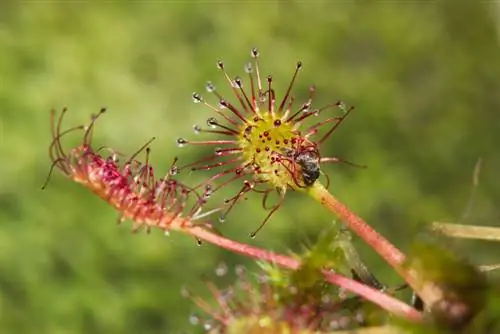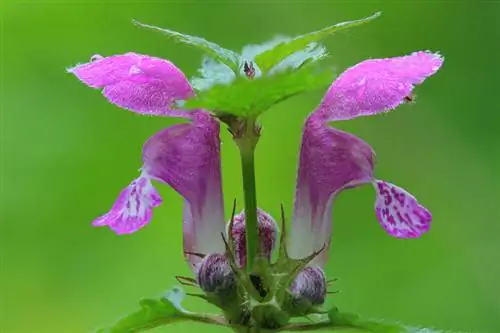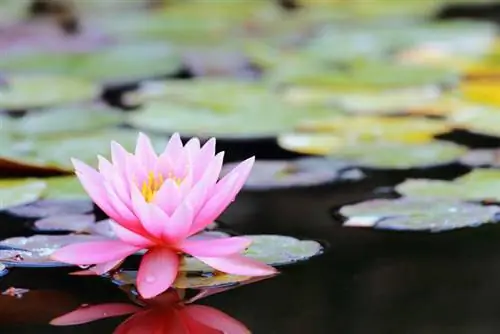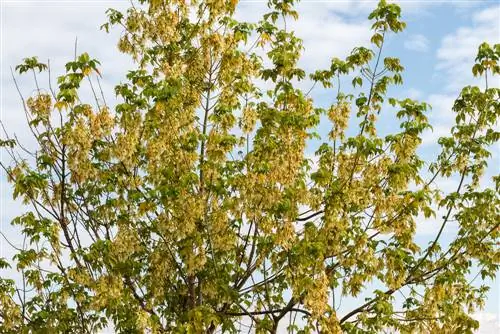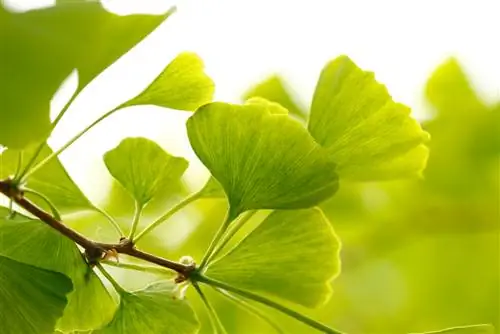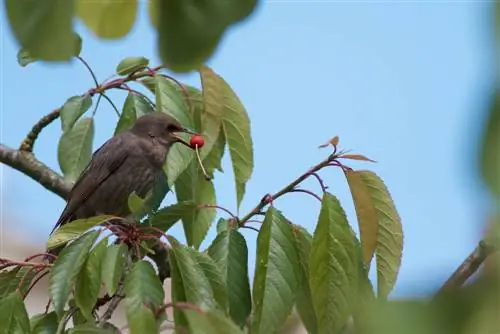- Author admin [email protected].
- Public 2023-12-16 16:46.
- Last modified 2025-06-01 06:02.
Sundew is undoubtedly one of the representative representatives of carnivorous plants. Of the more than 200 species of plants, some are very suitable for getting started in the interesting hobby of carnivore breeding. Interesting facts about sundews - a profile.
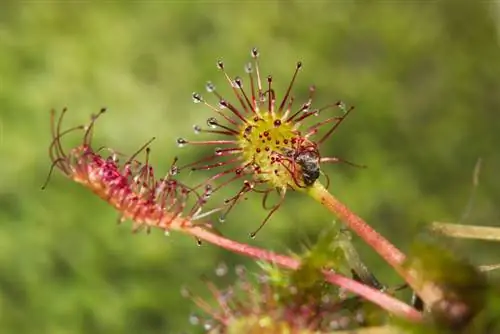
What is the sundew and where does it occur?
Sundew (Drosera) is a carnivorous plant from the sundew family, consisting of over 200 species. These perennial plants are found worldwide and are known for their sticky tentacles that catch insects. In Germany, native species are protected and sundew is also used as a medicinal plant.
Sundew - A profile
- Botanical name: Drosera
- Family: Sundew family (Droseraceae)
- Special feature: carnivorous plant (carnivores)
- Occurrence: worldwide
- Species: more than 200 species
- Growth habit: rosettes, upright or climbing
- Annual/perennial: mostly perennial
- Age: some species up to 50 years
- Height: 1 cm to 300 cm
- Leaves: very different, with and without stem
- Flowers: very long flower stalks, self-pollinating
- Flower colors: white, pink, orange, violet,
- Flowering time: depending on the species, very short flowering period
- Tentacles: Glands with drops of sticky secretion
- Propagation: seeds, leaf cuttings, root division
- Winter hardiness: native species hardy
- Use: ornamental plant in bog beds, flower windows, terrarium
- Use as a medicinal plant: for coughs and lung diseases, tissue cultivation.
Sundew species native to Germany protected
Sundew is one of the endangered species in Germany. You are not allowed to dig up, pick or cut the plant in the wild.
There are three native species of sundew in Germany:
- D. anglica (long-leaf sundew)
- D. rotundifolia (round-leaved sundew)
- D. intermedia (Medium Sundew)
Does Drosera need to be fed?
Like all carnivorous plants, the sundew does not need to be fed. There are usually enough insects that the plant can catch itself. If no meat food is available, Drosera supplies itself with nutrients through the roots and leaves.
If you want to feed your sundew for demonstration purposes, give a maximum of one animal that is still alive. Never feed dead insects as they will only rot.
Sundew as a medicinal plant
Sundew has been used as a medicinal plant for centuries. It is primarily used for respiratory diseases. Sundew is administered as a tea or tincture.
The sticky secretions are used in biomedicine for tissue cultivation.
Since sundew is protected, only cultivated plants or Drosera plants from other regions are used to produce natural medicine.
Tip
Caring for sundews is less complicated than many plant lovers think. What is particularly important is that no soil is used, but rather special carnivore substrates (€11.00 on Amazon). Water Drosera only with rainwater or distilled water.

